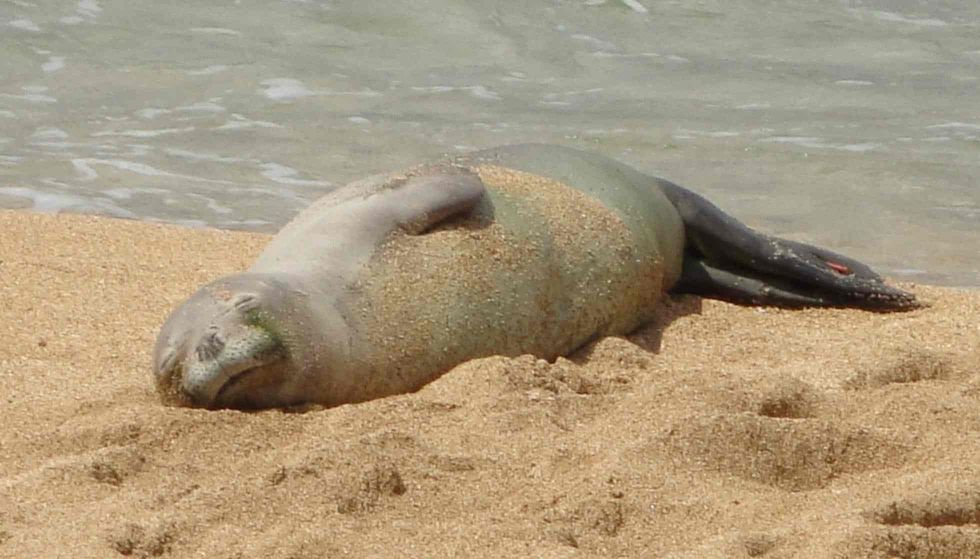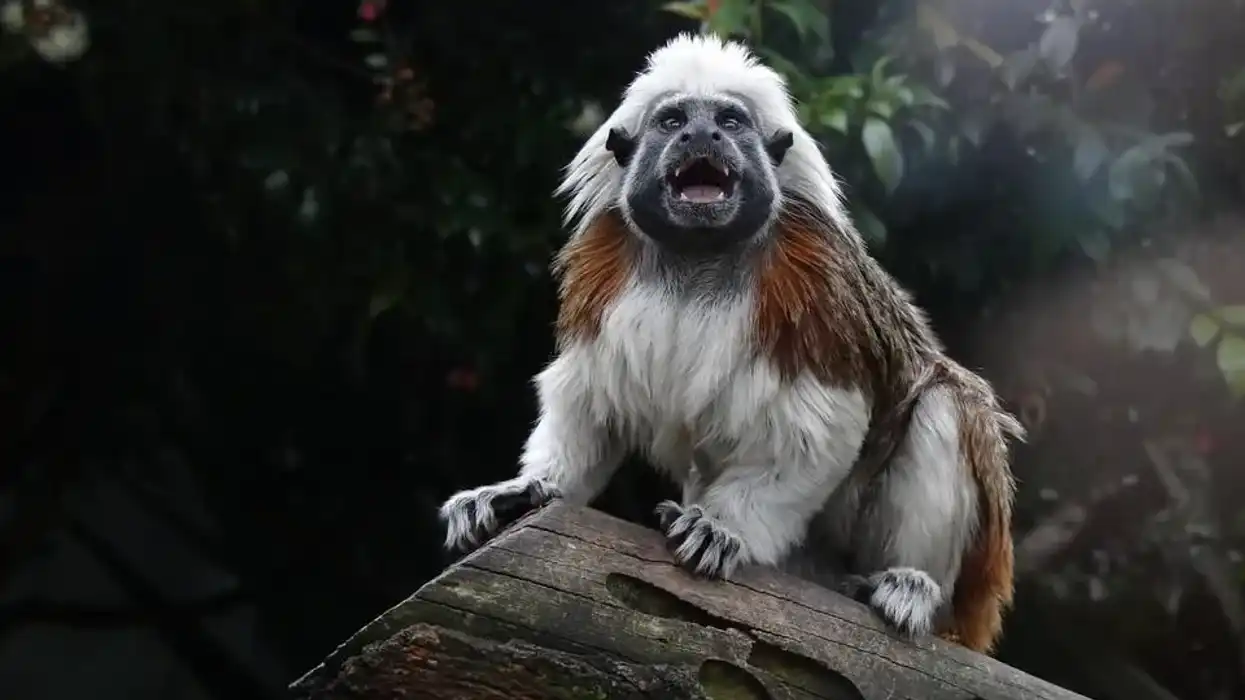The first recorded sight of Caribbean monk seals was as early as the second exploration of Christopher Columbus. In 2008, a long search was conducted for these animals which, unfortunately, resulted in zero sightings.
They were declared extinct species after that. They were very curious and not at all aggressive to humans, which unfortunately made them easy prey to human hunters.
The monk seal population worldwide is declining, and unfortunately, their closely related species the Mediterranean monk seals as well as Hawaiian monk seals have also been enlisted as an endangered species in the IUCN red list of threatened species.
However, due to the endangered species act, the heavy hunting of those two species of monk seals has been restricted to an extent. There are many facts available about the Caribbean monk seal extinction and Caribbean monk seal habitat, please read on to learn more about them.
If you like reading fun facts about animals, do check out Weddell seal facts and Czechoslovakian wolfdog facts.
Caribbean Monk Seal Interesting Facts
What type of animal is a Caribbean Monk Seal?
As evident by the name, these animals are monk seals, which are found around the Caribbean region. They are the only seals to have inhabited the Caribbeans, but unfortunately, they went extinct a long time ago due to overhunting and the destruction of their primary food sources.
However, experts have recently found that the main reason for their extinction is the destruction of their natural habitat.
What class of animal does a Caribbean Monk Seal belong to?
Caribbean monk seals, like all seals, are mammals, which means that they give birth to live pups, instead of laying eggs. These animals are thought to be closely related to the Mediterranean monk seal which is found around the Mediterranean range and the Hawaiian monk seal, which is found around the Hawaiian islands.
A beautiful brown and grey coated animal is the Caribbean monk seal. Monachus tropicalis is their scientific name.
How many Caribbean Monk Seal is there in the world?
Unfortunately, Caribbean monk seals went extinct a long time ago due to the destruction of their primary food source and natural habitats. Heavy hunting by humans for their oil also contributed as a major factor to their extinction.
Their closely related cousins Mediterranean monk seal as well as the Hawaiian monk seal are also facing the threat of extinction due to the same reasons. These seals are also called the West Indian monk seal.
Where does a Caribbean Monk Seal live?
In the past, Caribbean monk seals were found around the Caribbean range of the Yucatan Peninsula, Florida, Antilles, and the Bahamas. Some sightings were reported from Jamaica and Haiti, though they were mostly unconfirmed.
What is a Caribbean Monk Seal's habitat?
The West Indian monk seal is an extinct species, so all we can rely on are historical facts. Even though they liked to spend some time onshore, most of their time was spent in the ocean.
They also used to spend the breeding season in the marine atmosphere, seeking shelter in the coastal reefs and rocky areas. Interestingly, most sightings that were reported were from underwater divers, so it can be assumed that this marine mammal was hard to recognize out of the ocean.
Who does the Caribbean Monk Seal live with?
These sea lions used to live in groups of about 20-50 individuals. However, groups containing up to 100 individuals were sighted as well, although, that happens mostly during the breeding season.
Their closely related species the Hawaiian monk seals, as well as Mediterranean monk seals, have been noticed to share this behavior as well. Unfortunately, they are both now critically endangered and are facing the threat of going extinct.
How long does a Caribbean Monk Seal live?
Very little is known about their natural history due to them being extinct. However, in the wild, these seals were known to live for about 20 years on average, and some were recorded to live even longer than that.
How do they reproduce?
This species of marine mammal is known for having a long breeding period which usually starts early in December. This is true for most animals of tropical waters, but maybe especially for these seals.
One pup is usually born from each pregnancy, and their nursing period is thought to be quite short because the mother was not known to feed during this time. Unfortunately little else is known about the breeding process of this species.
What is their conservation status?
This marine mammal went extinct a long time ago due to heavy hunting for oil and the destruction of their primary diet. However, the major reason is attributed to the destruction of their natural habitat.
Caribbean Monk Seal Fun Facts
What do Caribbean Monk Seals look like?

*This is not the picture of a Caribbean Monk Seal, this is the picture of a seal, if you have an image of a Caribbean monk seal please email us at hello@kidadl.com.
These beautiful marine lions used to possess a dark brown or grayish coat that faded to pale yellow on the underside. They had large dark-colored eyes and their neck always looked collared because of the rolls of body fat surrounding them.
They had four nipples instead of the usual two for nursing their young, and well-developed front and hind digits with palms and soles that completely lacked fur.
There is little sexual dimorphism between the males and females, with the males being larger than the females. The pups were born with a shiny black coat and were about 38-40 in (97-102 cm) in length with a weight of about 35-40 lb (16-18 kg).
How cute are they?
This seal used to be very cute with its gray-brown coats which faded to a pale yellow on the underside.
They had large dark-colored eyes that gave their face a very expressive appearance. It would have been a sight to behold to watch them swimming in and out of reefs in coastal areas, but, unfortunately, that is a sight we will possibly never be able to witness as they went extinct a long time ago.
Thankfully, many conservation groups are working hard to keep the population of the remaining species of monk seals stabilized as they face the same threat of extinction.
How do they communicate?
After studying the remaining monk seals in the wild, experts believe that these seals used to communicate with their unique calls and through body language and tactical means.
Very little is known about the social behavior of this species due to them going extinct a long time ago. The major reasons for that could be attributed to them being killed off by human hunters and the destruction of their habitat.
Unfortunately, the remaining monk seals have also been facing the threat of extinction, but thankfully many conservation groups are working to protect and stabilize the members of the genus Monachus.
How big is a Caribbean Monk Seal?
Caribbean seals were big creatures, and the males were often larger than the females. This seal species was about 87-96 in (220-244 cm) in length, which is about the same size as an African lion.
How fast can a Caribbean Monk Seal move?
It is hard to say just how fast these wild marine mammals could move as this species went extinct quite a while ago. However, keeping the remaining species of these wild monk seals in mind, it can be assumed that their speed was pretty fast.
They were amazing swimmers who liked to spend their time swimming around the marine atmosphere like the reef-riddled coastal areas.
It is also assumed that their speed was significantly faster in the tropical ocean waters than onshore of the islands. Monachus tropicalis was their scientific name.
How much does a Caribbean Monk Seal weigh?
These beautiful animals were pretty heavy, with the male sea lions being heavier and bigger than the female sea lions. Their range weight is about 375-600 lb (170-270 kg). Unfortunately, these beautiful monk seals went extinct a long time ago due to the destruction of their habitat and being killed recklessly by human hunters.
What are the male and female names of the species?
Like all seals, the male Caribbean monk seal is called a bull whereas the female Caribbean monk seal is called a cow.
There is some sexual dimorphism noticed in this species with the males being a little larger and heavier than the females.
The population of the species of sea lions all over the world is declining, however, the species closest to the Caribbean monk seals, the Hawaiian monk seals, and the Mediterranean monk seals have been enlisted as endangered because of heavy hunting for oil and habitat loss in their native range.
Thankfully, after their endangered status came to light, many conservation groups have been working to restore and stabilize their numbers in the tropical islands.
What would you call a baby Caribbean Monk Seal?
The babies of the Caribbean monk seals were called pups. They were born with a shiny black coat and were about 38-40 in (97-102 cm) long.
What do they eat?
Although very little is known about the Caribbean monk seals due to their extinct status, it is assumed that their primary diet consisted of reef fish, eels, octopus, spiny lobsters, and other fish and invertebrates.
Their food habits were deduced by studying the diet of other monk seals who also inhabit the marine environment. The sea lion population on a mass level is on a decline, and their very closely related cousins the Hawaiian seals and the Mediterranean monk seals have been facing the same threat as well.
They are unfortunately also endangered and are facing the threat of extinction.
Are they poisonous?
Monk seals in general are not poisonous, and the Caribbean monk seals were no different. They were not known to be aggressive towards humans unless provoked. This curious nature is a major factor in them being easy prey to human hunters and it contributed majorly to them going extinct.
Would they make a good pet?
Seals of any kind do not make good pets as they are unpredictable and their bites can cause serious harm Caribbean monk seals possess the same threat.
They are also used to a marine atmosphere and as you can not bring the ocean to your house so keeping them as pets is a no-go, not to mention the fact that this species is extinct so you can not even witness them in the wild let alone keep them as pets.
Did you know...
A type of nasal mite used to live inside the nasal cavities that were completely dependent on them. These also went extinct along with these seals.
Causes Of The Caribbean Monk Seal's Extinction
This species went extinct a long time ago due to many reasons. The major causes can be attributed to heavy hunting by human hunters and the destruction of their primary diet. Experts have recently found that the main reason for their extinction is the destruction of their natural habitat.
When was the Caribbean Monk Seal declared a species?
The first mention of this seal in history is found as early as the second exploration of Christopher Columbus, around 1493-1496. They were declared extinct when a long search that went on for five years was conducted in 2008, which, unfortunately, resulted in zero sightings of this species anywhere in the wild.
Here at Kidadl, we have carefully created lots of interesting family-friendly animal facts for everyone to discover! Learn more about some other mammals including island fox facts and bowhead whale facts.
You can even occupy yourself at home by coloring in one of our free printable Caribbean Monk seal coloring pages.










